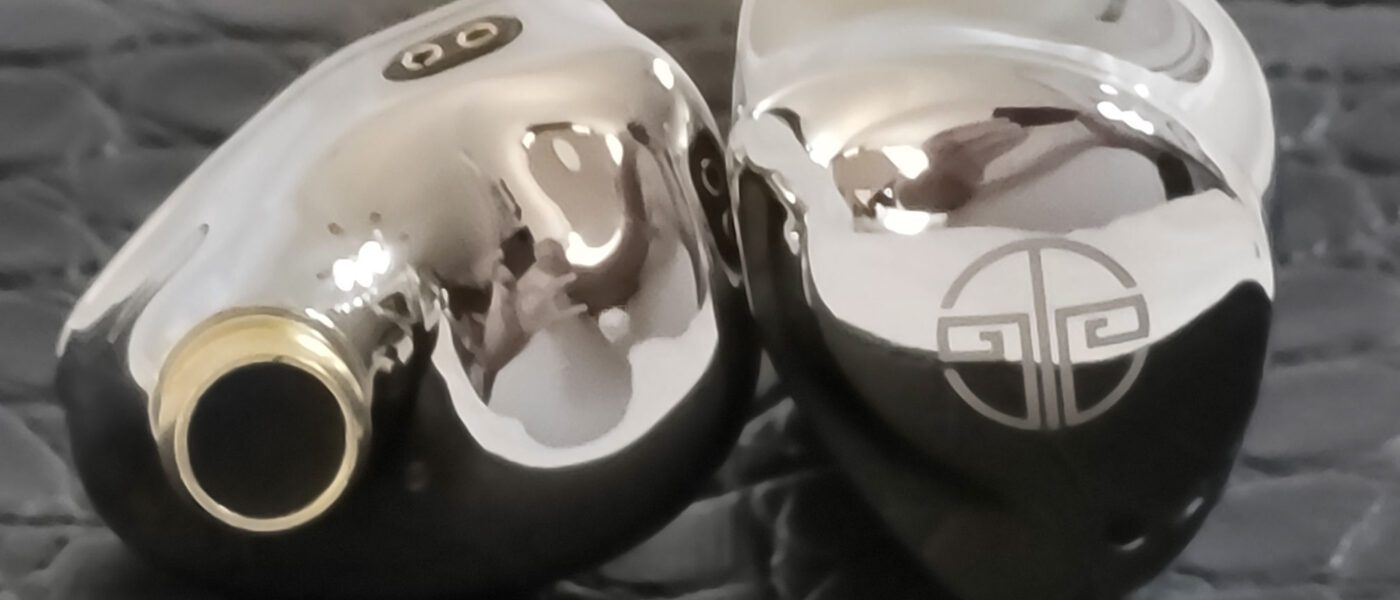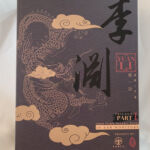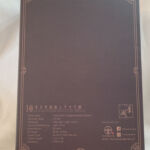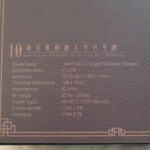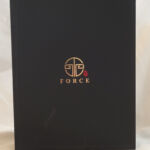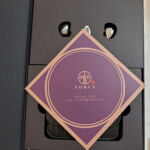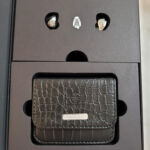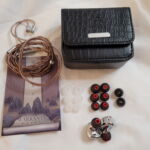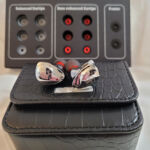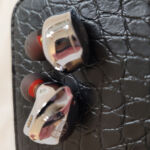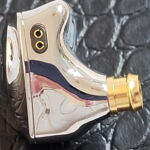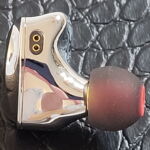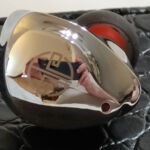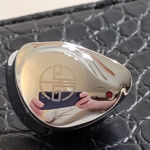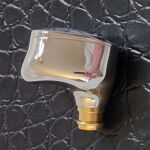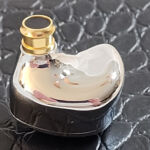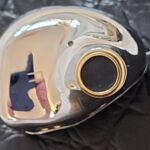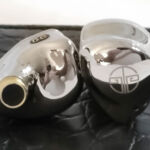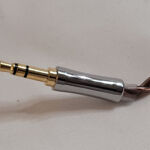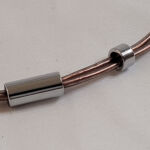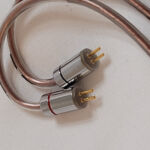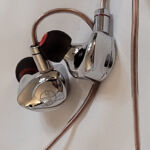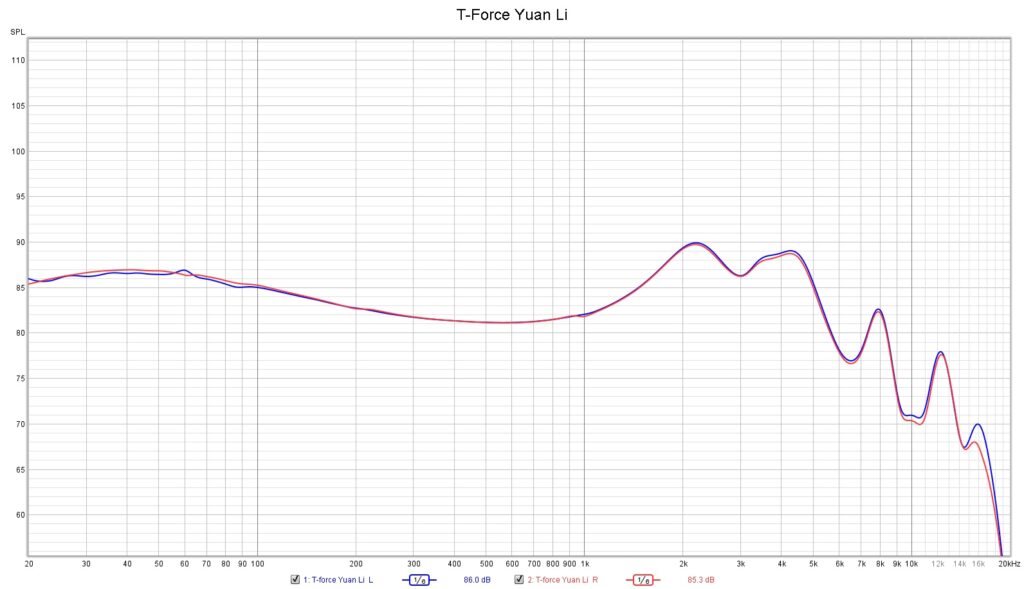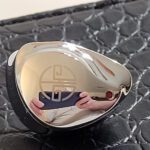T-Force Yuan Li
disclaimer: The T-force Yuan Li was provided by HifiGo for the purpose of this review. I have no financial interest in HifiGO or any of its subsidiaries, nor have I received any guidance on the content of this review or any compensation. If you have an interest in the Yuan Li, see T-force Facebook page or shop Hifigo to purchase the Yuan Li.
Unboxing / Packaging:
The packaging for the Yuan Li is just cool and if you are going to name an in ear after an Emperor (even if it is one from several centuries ago) it should be fit for one. The front of the box is highly stylized with a dragon, and the T-force name and logo as well as the Yuan Li name in red at the far right. The other interesting thing is a Trilogy Part I logo that hints at the next two releases yet to come. The rear of the box takes on an almost leather bound book look with the specs in gold. Removing this outer packaging reveals a simple black book fold box with the T-force name and logo in gold on the face. Lifting the cover reveals the mirror polished earpieces in the upper portion and the alligator hide look leather case in the lower section. The kit has 8 sets of 3 types of tips along with the earpieces, cable, and case. Simple straight forward and classic in style. Remember retail is $119 so while it looks like a higher priced offering the kit is more in line with actual cost.
Build/Fit:
The earpieces are highly polished aluminum shells with a matching faceplate in a semi-custom shape. Size is on the small side and T-force marketing materials suggest a long-term development program using their oem experience and computer aided design to create a shape with long term comfort. I found the design quite comfortable as it sits mostly in the ear and weight is light enough to keep it from being an issue. The aluminum shells should ensure durability and are well polished and fitted with no play or space between metal and connector at the bi-pin. The Nozzles are brass and tightly fitted to the inner shell with a large lip for tip retention and a slight forward and upward rake when inserted in the ear. There are two vents, one on the faceplate immediately opposite the nozzle and the second on the inner surface at approximately the mid-point. Some will find the shells a fingerprint magnet and I did have some difficulty taking pictures without inadvertent self-portraits.
Internals:
The heart of the Yuan Li is a 1omm dual cavity dynamic driver with a diamond like carbon diaphragm. T-force designed the driver from the ground up specifically for this series with a nominal impedance of 32Ω and a sensitivity of 103.5 dB/mW @ 1kHz with a variation of no more than ± 1dB. I stress that here as far too often a sensitivity is listed with no indication of at what frequency that measurement was taken and no margin of error stated so the numbers mean little since they have no solid point of reference to connect to. T-force advertises the Yuan-Li will work directly from a phone or tablet but it definitely benefits from a more potent amplifier despite low impedance and high sensitivity numbers that might suggest otherwise. I found the Yuan-Li worked well powered from the Cayin N3ii or the Hiby R3 Pro Saber.
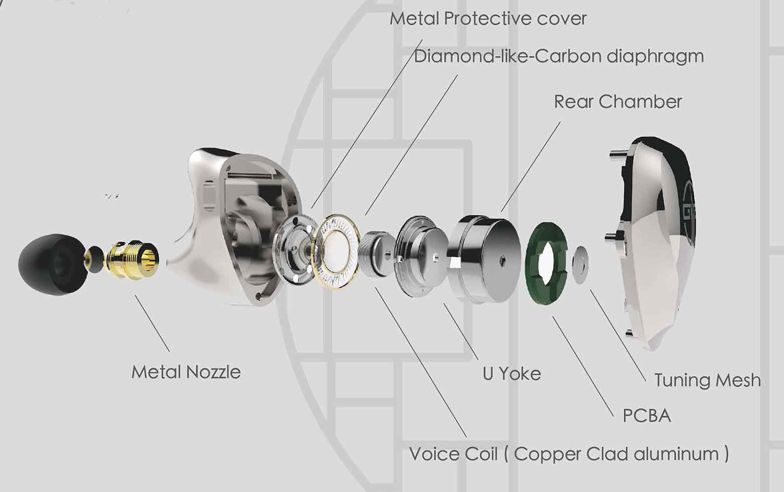
Cable:
The cable included with the Yuan Li utilizes two different diameters of 6N OCC Copper wire as conductors with a layer of Dupont Insulator between the two separating the conductors. The wires run as a two wire twist from the 3.5mm jack up to the splitter and then run as single wires up to the 0.78mm bi-pin connectors. The outer casing of the wire is a smoked clear material that gives the copper a dusky color and offsets the mirror polished metal jack housing, splitter, chin slider, and connector housings. At the north end the cables do have pre-formed hooks for over ear wear with the right housing having a red band for ease of indexing. I found the cable pliable with no memory after being coiled for a week which is good as far too many kink or develop a memory and want to tangle or retain loops after being coiled.
Sound:
Bass:
Sub-bass is just slightly elevated with a peak around 60Hz and a gradual drop on either side of it. Roll-off becomes evident below about 30Hz and the extreme lows have a monotone quality with less texture below about 50Hz. Mid-bass is much better textured and nuanced and here the speed of the driver begins to really show itself. There is no perceptible bleed and the mid-bass is very clean and tight when considering the price. These wont satisfy the basshead crowd but those looking for something near neutral with good life will appreciate the level of control the Yuan Li delivers.
Mids:
While the graphic might lead people to believe the mids are recessed they don’t sound at all behind the lows in extended listening sesssions. The lower mids pick up a touch of warmth from the mid-bass and have good note weight. Male vocals have a nice natural timbre and cut through the instrumentation well. Electric guitar has good definition to its attack and acoustic guitar and piano both have a very natural tonality. Strings benefit from an upper-mid lift that brings a bit more energy to violins and female vocals and pushes both slightly forward. The upper-mid/lower-treble lift was a bit much at higher volumes but is well controlled at moderate listening volumes.
Treble:
The Lower treble is on the same raised plateau as the upper-mids before dropping back at roughly 5kHz. This gives the lower treble good clarity and allows a lot of detail to shine through without taking it over the edge into stridency. Snare rattle is good and sharp and cymbals have good energy if not quite enough to be wholly correct. The drop-off above 5kHz helps tame the top-end and keep the Yuan Li from becoming fatiguing, but it does limit the top end a bit. Air is good as the Yuan Li doesn’t sound closed in, but sparkle is limited and these don’t please those looking for a super-extended treble. Final roll-off is well above the limit of my hearing but the practical roll-off is nearer to 12kHz where it drops back considerably before finally rolling off entirely above that mark.
Soundstage / Imaging:
Soundstage is a bit wider than deep and is fairly intimate overall giving the user a feeling of a small theater in the round or dive bar kind of size. Seating the orchestra is a bit crowded but layering and instrument separation is good enough to keep things from sounding congested. Imaging is quite good as well with movements easily tracked and precisely identified in space. There is some mild compression as tracks get super busy but the driver is fast enough that it was less than expected for the price class and won’t impact all but the most demanding listener.
Thoughts / Conclusion:
2020 and 2021 have suddenly seen a resurgence in single dynamic driver models after 2019 was the year of the BA wars. The market has now shifted from the how many drivers can we cram in a shell to how cohesive and organic a sound can we get with models from the Moondrop series, Blon Bl-03, and Dunu Zen dominating a lot of the conversation. Even the mighty Sennheiser has two new models to throw into the ring in the ie300 and ie900. Looking at reviews of these they almost all cite tonality as their strongest attribute and the Yuan Li belongs in that same discussion. Considering the price, the Yuan Li has great build quality, a solid kit, and great tonal accuracy. It is at its best with String quartets, piano and vocal mixes, or small ensemble pieces where the individual instruments are allowed to show off all their individual timbral quirks. Large ensemble pieces lose a bit of that detail that can be heard with a single instrument. Perhaps the best thing I can say in closing is that I constantly had to remind myself of the price of these while writing as the criticisms I can level against the Yuan Li are all the same kind of criticisms I would level against things like the Dunu Zen at its much higher price. For a budget single dynamic driver in-ear, the Yuan Li is among the best. T-force named it after an emperor so it had to deliver the goods or fall flat. I can happily say it stands tall and does the emperor proud.
-
Bass - 7.5/107.5/10
-
Mids - 7.5/107.5/10
-
Treble - 7/107/10
-
Soundstage - 7/107/10
-
Imaging - 7.5/107.5/10
Summary
Pros: great build, even better tonality, very organic and natural
Cons: fingerprint magnet, limited extension at both ends, safe tuning

